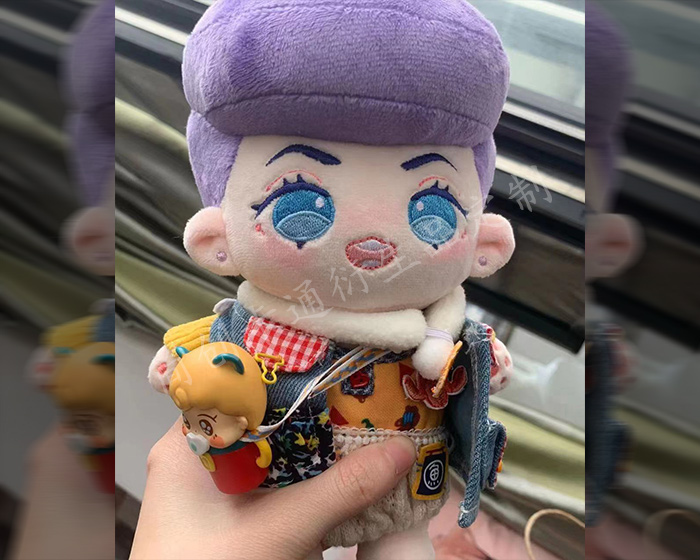stuffed animals often serve as cherished companions, offering comfort and joy to children and adults alike. However, when it comes to cleaning these beloved toys, many people wonder about the best methods. One common question is: what happens if you put a stuffed animal in the dryer? While the answer can vary based on the toy’s materials and construction, there are several potential outcomes to consider.
1. Potential Damage to Fabric and Features
The first concern when placing a stuffed animal in the dryer is the potential damage to its fabric. Most stuffed animals are made from soft materials like plush, cotton, or polyester, which can be sensitive to high heat. In a dryer, the combination of heat and tumbling action can lead to:
-
Fading Colors: Over time, the heat can cause colors to fade, making the toy look worn and less appealing.
-
Fabric Fraying: The agitation in the dryer can lead to fraying edges, especially if the toy has delicate features or seams that aren’t reinforced.
-
Detachment of Features: Many stuffed animals have glued-on eyes, noses, or accessories. The heat from the dryer can weaken the adhesive, causing these features to detach or fall off.
2. Loss of Shape and Fluffiness
Stuffed animals are designed to be cuddly and plush, but the dryer can adversely affect their shape:
-
Flattening: The intense tumbling can flatten the stuffing inside the toy, resulting in a less huggable and shapeless appearance.
-
Uneven Distribution of Stuffing: The dryer’s motion can lead to uneven distribution of stuffing, creating lumps or areas where the filling has shifted, compromising the overall look and feel.
3. Risk of Melting
Another significant risk associated with putting a stuffed animal in the dryer involves the materials used in its construction:
-
Plastic Parts: Some stuffed animals contain plastic components or embellishments. High heat can cause these parts to melt or warp, leading to permanent damage.
-
Synthetic Fabrics: Many plush toys are made from synthetic fabrics, which can melt or become misshapen in high temperatures.
4. Alternative Drying Methods
Given the potential risks of using a dryer, it’s often better to explore alternative drying methods:
-
Air Drying: The safest way to dry stuffed animals is to air dry them. Lay the toys flat on a clean, dry towel in a well-ventilated area, away from direct sunlight, which can cause fading. This method ensures that the stuffed animal retains its shape and texture.
-
Using a Fan: If you’re looking for a quicker drying method, placing the stuffed animal near a fan can help circulate air and speed up the drying process without the risks associated with the dryer.
5. Cleaning Recommendations
To keep stuffed animals clean without risking damage, consider these tips:
-
Check the Care Label: Always read the care instructions on the stuffed animal’s tag. Some toys are specifically labeled as machine washable or dryer safe, while others may require gentle cleaning methods.
-
Spot Cleaning: For minor stains, spot cleaning with a damp cloth and mild detergent can be effective. This method helps maintain the toy’s integrity while addressing dirt or odors.
-
Use a Mesh Bag: If you decide to machine wash your stuffed animal, consider placing it in a mesh laundry bag to provide an extra layer of protection. This can help prevent snagging and damage during the wash cycle.
Conclusion
Putting a stuffed animal in the dryer can lead to various risks, including damage to fabric, loss of shape, and the potential for melting plastic components. To preserve the integrity of your beloved plush companion, it’s best to opt for air drying or gentle cleaning methods. By following proper care instructions and treating your stuffed animals with care, you can ensure they remain comforting companions for years to come.
The following are some examples of plush toys that our factory customizes for customers. Check out if there is one that you like best.
-
Custom Animal Plush
-
Cute Plush Doll
-
Custom Stuffed Animals
-
Plush Toy
-
Plush Dolls
-
Custom Stuffed Dolls
-
Custom Plush Toy
-
Cotton Dolls
-
Weighted Plush Toys
-
Cute Stuffed Animals
-
Custom Pet Stuffed Animal
-
Warmies Stuffed Animals
-
Weighted Stuffed Animal
-
Soft Toys
-
Plush Stuffed Doll
-
Custom Stuffed Dolls
-
Plush Maker
-
Bear Stuffed Toy
-
Anime Plush
-
Custom Stuffed Animal
-
Anime Plush
-
Custom Plush Toy
-
Personalised Stuffed Animal
-
Plush Animal Toys
-
Custom Plush Makers
-
Custom Plushies
-
Toy Manufacturer
-
Rag Doll Making
-
Custom Toys
-
Dog Plush Toys
-
Custom Rag Doll
-
Stuffed Animals
-
Custom Plush
-
Custom Plush Dolls
-
20cm Cotton Doll
-
Jojo Plush
-
Custom Doll
-
Jojo Doll
-
Large Plush Toys
-
15cm Cotton Doll
-
Dumpling Plush
-
Cotton Doll


























